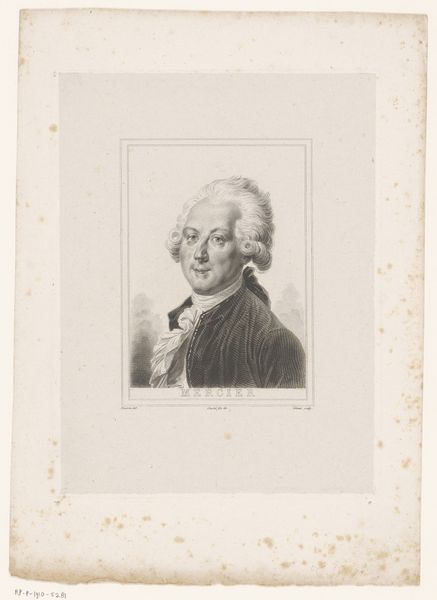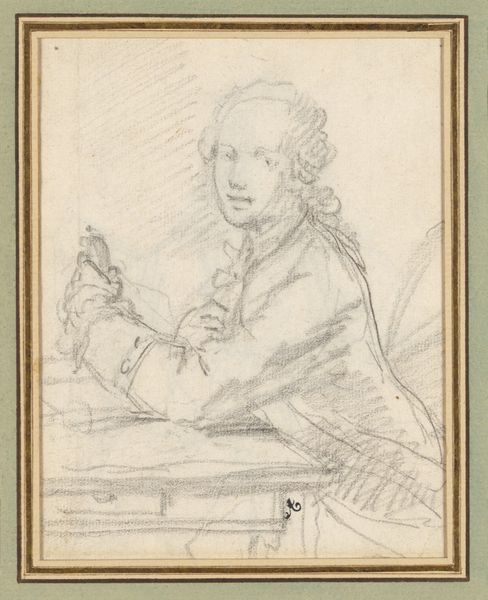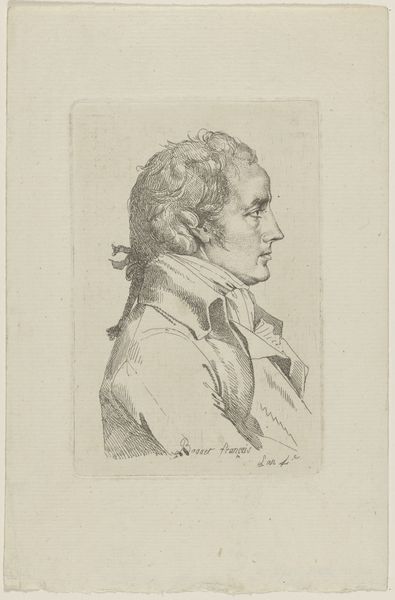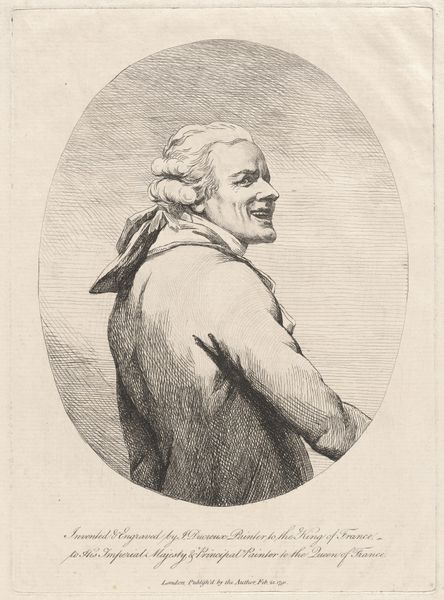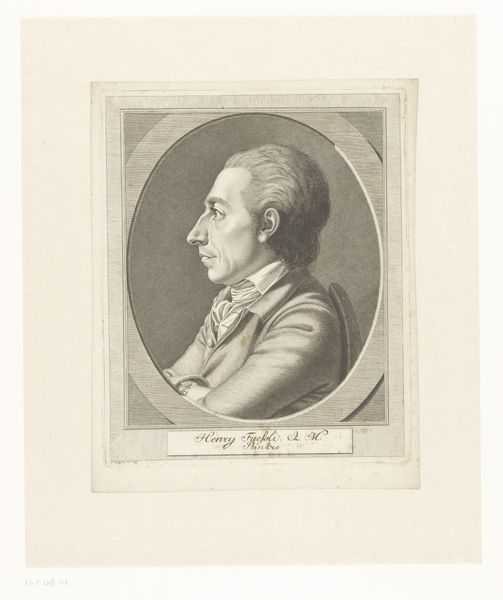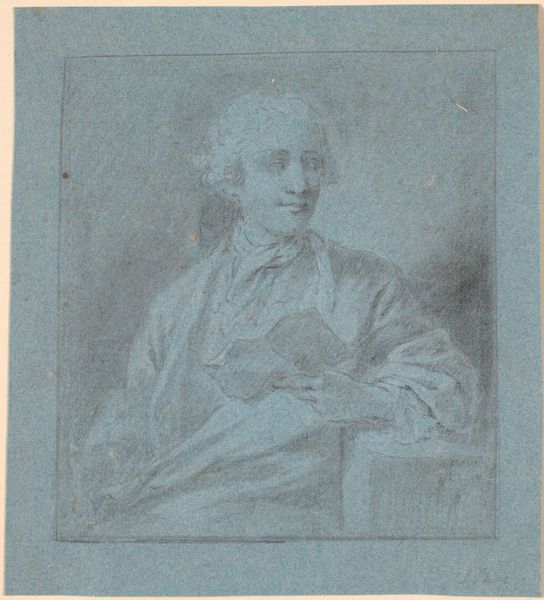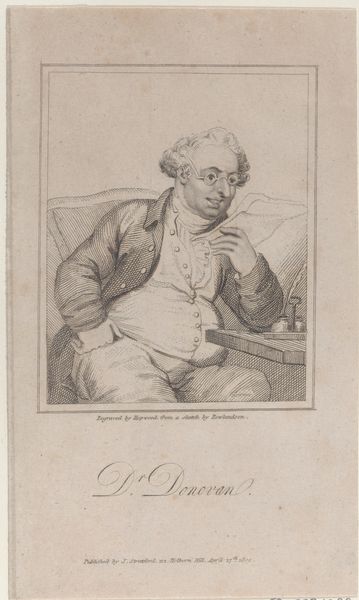
Udkast til herreportræt. Knæstykke med stok og sabel 1760 - 1780
0:00
0:00
drawing, pencil
#
portrait
#
drawing
#
neoclacissism
#
pencil drawing
#
pencil
#
portrait drawing
#
academic-art
Dimensions: 301 mm (height) x 200 mm (width) (bladmaal)
Editor: Here we have C.A. Lorentzen’s "Draft for a Portrait of a Gentleman. A Half-Length Figure with Cane and Sabre" from between 1760 and 1780, done in pencil. I find the sketchiness and the subject’s sideways glance intriguing. How do you interpret this work, especially within its historical context? Curator: This portrait draft, situated within the Neoclassical period, speaks volumes about power dynamics and masculine identity. Consider the pose, the partial presence of the sabre, and the almost theatrical gesture. This isn’t just a portrait; it's a carefully constructed image of authority. How do you see this representation of masculinity playing out within the context of 18th-century European society? Editor: Well, he seems confident, maybe even a bit aloof. The sabre hints at military status and the cane suggests refinement, so he’s definitely presenting himself as a man of status. Does the incompleteness of the sketch impact the message? Curator: Absolutely. The unfinished nature allows us to see the construction of this ideal. The 'draft' becomes a commentary, revealing the layers of performance and privilege inherent in such portraiture. Think about it: Who had access to this kind of self-representation? What power structures were being reinforced? And how does the art reinforce those systems of power and domination? Editor: That's fascinating, the sketch almost demystifies the construction of power. I initially saw a simple portrait, but I now see the complex negotiation of identity and authority at play. Curator: Exactly! And by questioning these representations, we start to understand not just the history of art, but the history of social control, class, gender, and much more.
Comments
No comments
Be the first to comment and join the conversation on the ultimate creative platform.
